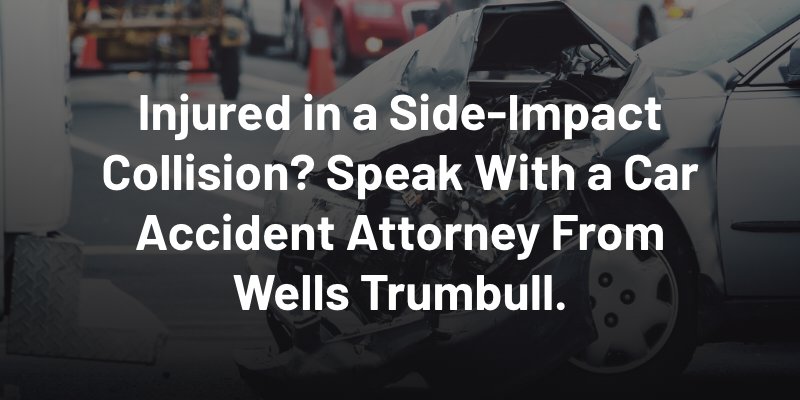The most common type of car accident in Washington and nationwide are side-impact collisions. Also called T-bone accidents or angle collisions, side-impact accidents make up 44.9% of two-car collisions, resulting in 8,800 fatalities in a single recent year. Side-impact collisions occur when the front end of one car impacts the side of another vehicle, often resulting in injuries to motorists in both cars. Typically, the occupants of the vehicle hit broadside fare the worst in a side-impact collision because the side of the car and the car door have a thin structure lacking the buffer zones of the front and back ends. Make sure to speak with an Everett car accident lawyer for legal guidance and support.
What Causes Side-Impact Accidents?
Most side-impact accidents occur in intersections or when one vehicle fails to yield the right of way when exiting a parking lot or driveway. Common causes of side-impact accidents include:
- Failure to yield the right of way
- Running red lights or stop signs
- Distracted driving
- Improper left turns
- Drowsy driving
- Intoxicated driving
- Speeding
Most side-impact accidents result from driver error, but less commonly, the cause of side-impact accidents may be poor road planning, inadequate signage, a defective auto part, or inclement weather conditions.

Who Is Liable in a Side-Impact Accident?
When an investigation occurs after an accident, the insurance companies involved determine whether one driver was entirely at fault or if both drivers contributed to the cause of the accident. It may seem that the driver who hit the other car broadside is always liable, but what if they had the right of way and the car they hit was in the intersection because they sped through a red light? Or what if one car’s brake system was defective or the street light malfunctioned?
An investigation to determine who is at fault must prove liability by gathering evidence showing that the at-fault party owed a reasonable duty of care to others on the road, they breached this duty of care by acting negligently, their breach of duty directly caused the accident and injuries, and the injury victim suffered significant economic and non-economic damages from the accident.
What Injuries Occur in Side-Impact Collisions in Everett?
Injuries in T-bone accidents in Washington are among the most severe car accident injuries, often leaving victims with serious damages like medical expenses, lost income, and non-economic damages like pain and suffering, disfigurement, and disability. Injuries often include the following:
- Head injuries and traumatic brain injuries
- Single or multiple fractures
- Back injuries
- Neck injuries
- Wrist injuries
- Shoulder Injuries
- Knee Injuries
- Shoulder and clavicle injuries
- Spinal cord damage
- Lacerations, bruises, and abrasions
Injury victims may file claims against the at-fault driver’s liability insurance to cover their damages, including wrongful death compensation if an injury causes death from a side-angle collision.
Other Types of Car Crashes in Everett
- High-Speed Collision Accidents
- Side-Impact Car Accidents
- Rear-End Accidents
- Head-On Car Accidents
- Unsafe Lane Change Accidents
- Uber Accidents
- Lyft Accidents
- Distracted Driving Accidents
- Drunk Driving Accidents
- Chain Reaction Accidents
- Uninsured and Underinsured Motorists
How Can an Everett Side-Impat Car Accident Attorney Help?
Liability may seem clear in a side-impact accident, but insurance companies rarely write out large compensation checks without assigning an insurance adjuster to dispute all or part of a claim to save costs and protect profits. In comparison-negligence states like Washington, the state’s insurance laws may incentivize an insurance company to assign an undue burden of fault to the injury victim to lower a payout by that percentage of fault.
According to Washington’s §RCW 4.22.005:
“In an action based on fault seeking to recover damages for injury or death to person or harm to property, any contributory fault chargeable to the claimant diminishes proportionately the amount awarded as compensatory damages for an injury attributable to the claimant’s contributory fault…”
An experienced car accident lawyer protects clients against insurance companies who dispute fault or assign injury victims an unfair percentage of responsibility for an accident to lower a payout. Contact Wells Trumbull today for the skilled legal counsel from an Everett personal injury attorney that you need to move forward toward the best possible outcome.